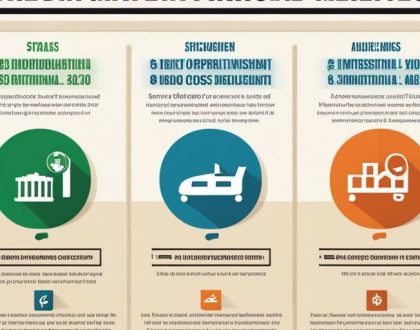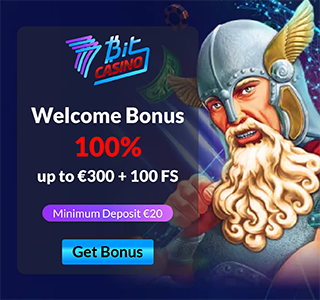Which social media platforms are right for your business?

As social media continues to shape the way we connect, communicate and market ourselves online, it’s important for businesses to navigate the landscape and determine which platforms are right for their brand. With so many options to choose from, it can be overwhelming to decide where to invest your time, effort, and resources.
In this article, we’ll compare some of the most popular social media platforms, including LinkedIn, Xing, Facebook, Instagram, Twitter, Snapchat, TikTok, Pinterest, and YouTube, to help you make an informed decision. We’ll explore the key features, audience demographics, and benefits of each platform, as well as some tips on how to measure your success and identify your target audience.
What are your business goals?
Before we dive into the specifics of each platform, it’s important to clarify your business goals and objectives. Are you looking to increase brand awareness, generate leads, drive traffic to your website, or boost sales? Each social media platform has its own strengths and weaknesses, and understanding what you want to achieve can help you choose the right platform(s) to focus on.
Business networks: LinkedIn and Xing
LinkedIn and Xing are both professional networking sites designed for business professionals to connect, share information, and build relationships. These platforms are ideal for B2B companies, job seekers, and professionals looking to expand their network.
LinkedIn has over 722 million users, with 40% of its members using the platform daily. The majority of users are between 25 and 54 years old, with a higher percentage of male users (57%). LinkedIn is known for its job postings, career resources, and thought leadership content. Companies can create a business page to showcase their brand, products, and services, and engage with their audience through sponsored content, groups, and events.
Xing is a similar platform, popular in the German-speaking countries of Europe. It has over 19 million users, with 40% of them using the platform daily. The majority of users are between 30 and 49 years old, with an even split between male and female users. Xing also offers job postings, career resources, and networking opportunities, and allows companies to create a business page and advertise their services to their target audience.
Social networks: Facebook, Instagram, and Twitter
Facebook, Instagram, and Twitter are popular social media platforms that allow users to connect with friends, family, and brands. They are ideal for B2C companies, influencers, and anyone looking to build a community or engage with their audience.
Facebook has over 2.7 billion users, with 74% of them using the platform daily. The majority of users are between 18 and 44 years old, with a higher percentage of female users (54%). Facebook offers a range of advertising options, including sponsored posts, stories, and videos. Companies can create a business page and engage with their audience through comments, messages, and live events.
Instagram has over 1 billion users, with 500 million of them using the platform daily. The majority of users are between 18 and 34 years old, with a higher percentage of female users (57%). Instagram is known for its visual content, with a focus on photos, videos, and stories. Companies can create a business profile and showcase their products and services through sponsored posts, influencer collaborations, and hashtag campaigns.
Twitter has over 330 million users, with 22% of them using the platform daily. The majority of users are between 18 and 49 years old, with a higher percentage of male users (66%). Twitter is a platform for real-time conversations and breaking news, with a focus on short-form text updates (tweets and retweets). Companies can create a business profile and engage with their audience through hashtags, mentions, and Twitter chats.
Visual platforms: Snapchat, TikTok, and Pinterest
Snapchat, TikTok, and Pinterest are visual platforms that allow users to share and discover creative content. They are ideal for companies looking to showcase their products and services in a visually appealing way, and reach a younger audience.
Snapchat has over 293 million daily active users, with the majority of users between 13 and 34 years old. Snapchat is known for its disappearing messages and playful filters, and offers advertising options such as sponsored lenses, filters, and stories.
TikTok has over 1 billion active users, with the majority of users between 16 and 34 years old. TikTok is a platform for short-form videos, with a focus on entertainment and creativity. Companies can create a business account and advertise through sponsored posts, hashtags, and collaborations with influencers.
Pinterest has over 478 million monthly active users, with the majority of users being women. Pinterest is a visual discovery engine, where users can search for inspiration and ideas for their hobbies, interests, and projects. Companies can create a business account and showcase their products through pins, boards, and promoted pins.
Video platform: YouTube
YouTube is a video-sharing platform that allows users to upload, watch, and share videos. It is ideal for companies looking to create and share video content, and reach a global audience.
YouTube has over 2 billion monthly active users, with the majority of users between 18 and 34 years old. YouTube is known for its long-form video content, with a focus on entertainment, education, and tutorials. Companies can create a business channel and monetize their videos through ads, sponsorships, and merchandise.
Conclusion
Choosing the right social media platform(s) for your business depends on your goals, target audience, and resources. By understanding the key features, audience demographics, and benefits of each platform, you can make an informed decision and create a social media strategy that resonates with your audience and drives results.
FAQs
Do I need to be on every social media platform?
No, it’s not necessary to be on every social media platform. It’s better to focus on a few platforms that align with your business goals and audience.
How do I measure the success of my social media strategy?
You can measure the success of your social media strategy by tracking metrics such as engagement, reach, traffic, leads, and conversions.
How do I identify my target audience on social media?
You can identify your target audience on social media by conducting market research, analyzing your competitors, and using social media analytics tools.
How often should I post on social media?
It depends on the platform and your audience. Generally, it’s recommended to post at least once a day on Facebook and Instagram, and several times a day on Twitter and Snapchat.
Can I use social media for customer service?
Yes, social media is a great channel for customer service. You can respond to customer inquiries, complaints, and feedback in a timely and personalized manner.
Esther
I am a professional writer with 8 years of experience in this field and I can provide you with the best-written content you can find. Education B.A. - English, George Washington University, United States, Graduated 2011.
Recommended Posts

Financial Aspects of Doing Business in Malta
July 26, 2024

Casino999.dk & Delasport Enhance Sports Betting
July 26, 2024

MightyTips & Merkur Bets Enhance German Betting
July 26, 2024




